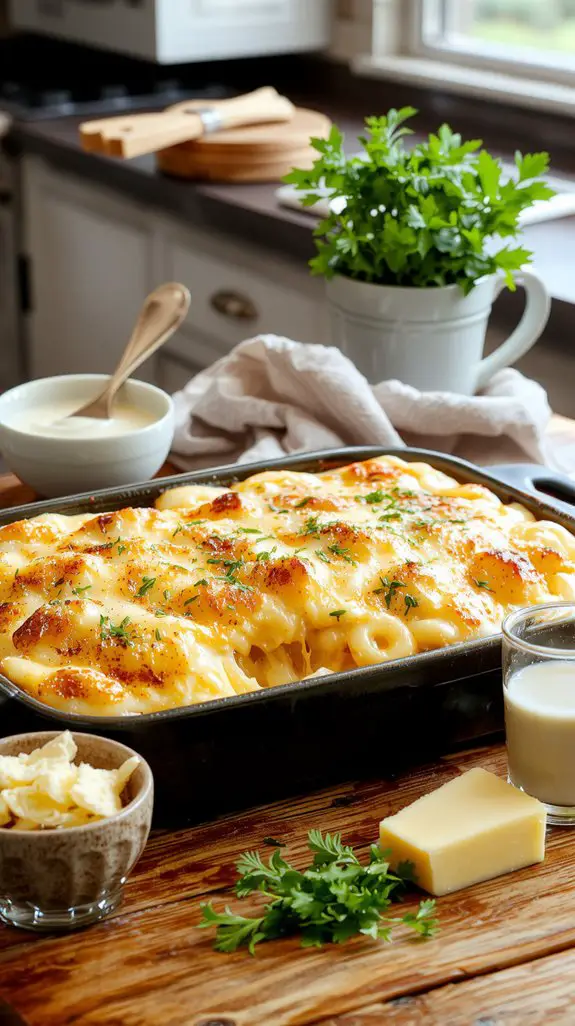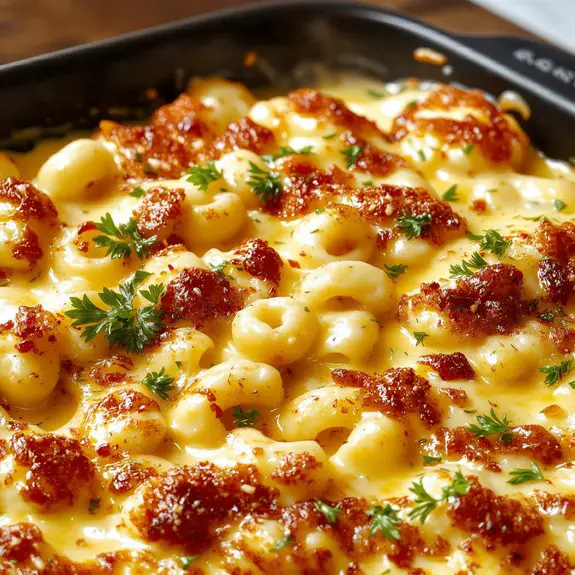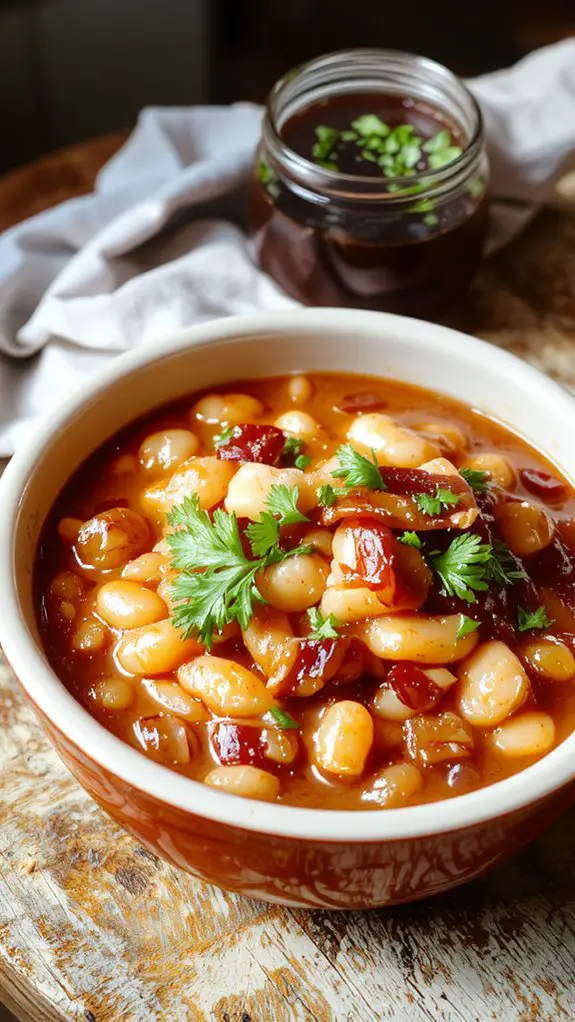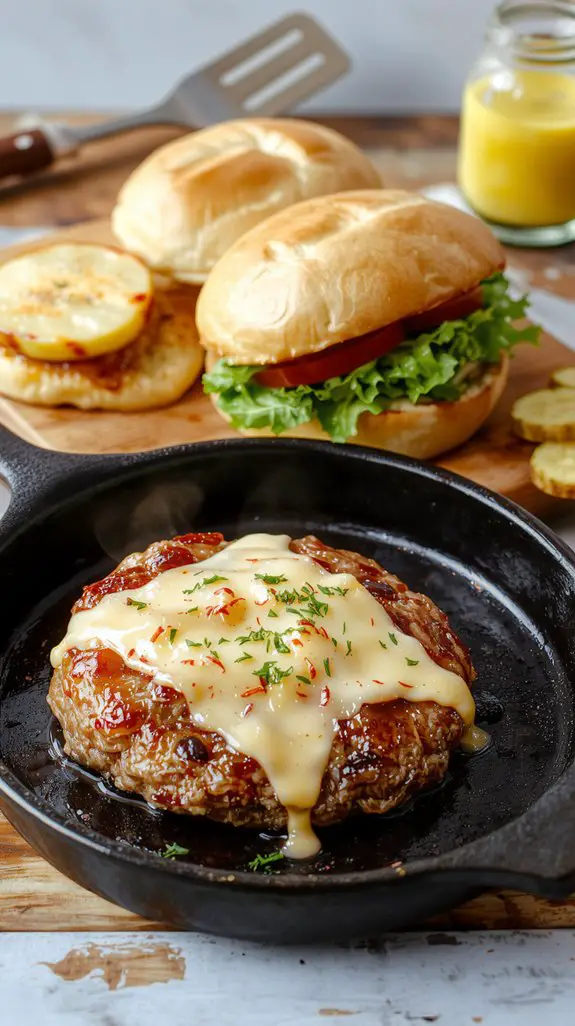Recipe
I can confidently say this homemade macaroni and cheese is the ultimate comfort food—creamy, cheesy, and downright irresistible. What makes it special? A blend of sharp cheddar and creamy Monterey Jack melted into a silky homemade sauce, topped with a golden, buttery breadcrumb crust.
This recipe isn’t just about nostalgia; it’s about creating a dish that’s rich, indulgent, and packed with flavor. I’ve made this countless times for family gatherings, and it always disappears faster than I can blink.
Imagine forkfuls of tender pasta coated in a velvety cheese sauce, with a crispy, crunchy topping that adds the perfect contrast. Trust me, once you try this, the boxed stuff won’t stand a chance. Let’s jump in—you’ve got this!
Ingredients
Homemade macaroni and cheese is all about simplicity and richness, but choosing the right ingredients can elevate it from basic to unforgettable. Let’s break it down—some items are must-haves, while others offer flexibility for substitutions.
- Elbow macaroni: The classic choice for its ability to hold the sauce. Substitute with shells or cavatappi if you prefer.
- Sharp cheddar cheese: Non-negotiable for that tangy, creamy flavor. Aged cheddar works best, but a mix of cheddar and Colby adds depth.
- Whole milk: Essential for a smooth, luscious sauce. For extra richness, substitute with half-and-half or heavy cream.
- Unsalted butter: Adds richness and helps create a smooth roux. Salted butter works, but adjust seasoning.
- All-purpose flour: A key thickener for the cheese sauce. Gluten-free flour substitutes work well too.
- Salt & pepper: Basics for seasoning—adjust to taste.
- Nutmeg: A pinch enhances the cheese flavor subtly—don’t skip it.
- Breadcrumbs (optional): For a crispy topping, panko or crushed Ritz crackers add a satisfying crunch.
- Garlic powder (optional): Adds a hint of umami if you’re feeling adventurous.
Pro tip: Freshly grated cheese melts smoother than pre-shredded, which often has anti-caking agents.
And if you’re feeling fancy, throw in a sprinkle of smoked paprika or cayenne for a smoky or spicy kick.
How to Make the Best Best Mac and Cheese

- Preheat your oven to 350°F (175°C). This guarantees your oven is at the right temperature when you’re ready to bake, helping the mac and cheese cook evenly and develop a golden crust.
- Cook the macaroni al dente according to the package instructions. Drain but don’t rinse—the starch helps the cheese sauce cling to the noodles. Overcooking the pasta now leads to mushy mac and cheese later.
- Prepare the cheese sauce. In a saucepan, melt butter over medium heat, then whisk in flour to create a roux. Cook for 1-2 minutes to remove the raw flour taste. Gradually add warm milk, whisking constantly to avoid lumps. Simmer until thickened.
- Add the cheese. Remove the saucepan from heat and stir in shredded cheddar and optional cheeses like Gruyère or Parmesan. The residual heat will melt the cheese without making the sauce greasy. Pro tip: Shred your own cheese—pre-shredded often contains anti-caking agents that can affect texture.
- Combine pasta and cheese sauce. Gently fold the cooked macaroni into the cheese sauce until evenly coated. Overmixing can break down the pasta, so keep it light and careful.
- Transfer to a baking dish. Spread the mixture into a greased 9×13-inch casserole dish. This size confirms even baking and a good balance of creamy interior and crispy top.
- Add the topping. Sprinkle a mix of breadcrumbs and melted butter evenly over the top. This creates a crunchy, golden crust. For extra flavor, mix in a bit of grated Parmesan.
- Bake for 20-25 minutes or until the top is golden and bubbly. Keep an eye on it during the last few minutes to avoid over-browning. If the top browns too quickly, loosely cover with foil.
- Let it rest for 5-10 minutes before serving. This allows the sauce to set slightly, making it easier to scoop and enjoy. Resting also secures the flavors meld together beautifully.
- Serve and enjoy! Pair with a fresh salad or steamed veggies for a complete meal. Leftovers reheat well—just add a splash of milk to revive the creaminess.
Nutrition
This homemade macaroni and cheese recipe provides essential nutrients. Here’s the nutrition breakdown per serving.
| Calories | Fat | Carbs | Protein | Fiber | Sugar | Sodium | Cholesterol |
|---|---|---|---|---|---|---|---|
| 450 | 20g | 45g | 18g | 2g | 6g | 600mg | 50mg |
Chef Tips
When preparing macaroni and cheese, I always recommend using freshly grated cheese instead of pre-shredded—it melts smoother and enhances the dish’s creaminess.
Cook the pasta al dente to prevent mushiness.
For the sauce, use equal parts butter and flour for a perfect roux, and whisk in warm milk gradually to avoid lumps.
Add a pinch of mustard powder or nutmeg to elevate the flavor.
Bake until golden for a crispy top.
Frequently Asked Questions
Can I Freeze Homemade Mac and Cheese?
Yes, you can freeze homemade mac and cheese, but I’d recommend undercooking the pasta slightly and skipping breadcrumbs. When I reheat it, I add a splash of milk to keep it creamy since freezing can dry it out.
What Type of Cheese Melts the Best?
I find that cheddar melts beautifully because it’s creamy and smooth. Mozzarella works well too, adding stretchiness, and I often mix in a bit of Gruyère for richness. Avoid hard cheeses—they don’t melt as easily.
How Do I Prevent the Cheese From Becoming Grainy?
I prevent grainy cheese by shredding it finely, adding it gradually to warm (not boiling) sauce, and stirring constantly. I also avoid overheating and use fresh, high-quality cheeses that melt smoothly for the best texture.
Can I Use Gluten-Free Pasta?
Yes, I can use gluten-free pasta. I’ll choose one that holds up well when cooked, like brown rice or quinoa pasta. I’ll also cook it al dente to avoid mushiness in the final dish.
Is It Better to Bake or Stovetop Cook Mac and Cheese?
I prefer baking mac and cheese because it gives a crispy top and richer flavor, but stovetop’s quicker if I’m in a hurry. Both work—just depends if I want creamy or baked texture.









